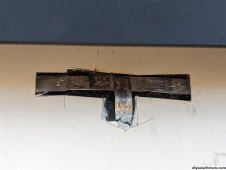OffGridForGood
Catch, make or grow everything you can.
Thats what I did too,
one panel got cracked glass during shipping, they sent me a new replacement, and let me keep the broken one.
I mounted it vertical on a wall, under a small overhang, as it seemed best not to have that cracked glass exposed to a lot of snow-load or rain. Its been there over a year now. Charges my mobile (24v) system. Works just fine.
one panel got cracked glass during shipping, they sent me a new replacement, and let me keep the broken one.
I mounted it vertical on a wall, under a small overhang, as it seemed best not to have that cracked glass exposed to a lot of snow-load or rain. Its been there over a year now. Charges my mobile (24v) system. Works just fine.




